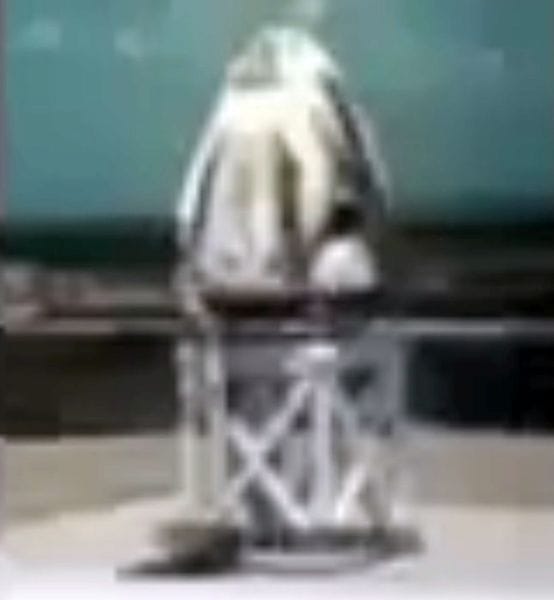![SpaceX Dragon 2 capsule on a test stand awaiting firing [Source: Astronut099]](https://fabbaloo.com/wp-content/uploads/2020/05/image-asset_img_5eb098d1af128.jpg)
A catastrophic incident destroyed a SpaceX Dragon 2 capsule, and it might have been caused by 3D printing.
SpaceX has been rapidly developing a human-rated space transport capability with their Dragon 2 capsule / Falcon 9 launcher combination in coordination with NASA’s commercial crew initiative. NASA has been seeking local alternatives to purchasing seats on Russian rockets to the space station, and both SpaceX and Boeing have been competing to do so.
SpaceX has been slightly in the lead between the two competitors, having successfully launched an unmanned version of the Dragon 2 spacecraft to and from the space station a few weeks ago. There was only one more test to complete before attempting the same with an actual human crew on board: a launch abort test.
The abort test involves separating the capsule from the rocket during launch. The idea is to take the crew safely away from an exploding launcher as fast as possible. SpaceX allocated a previously-used Dragon 2 spacecraft for this test.
Prior to the actual launch and abort test, the rockets on the capsule were to be test-fired to ensure they work correctly. That occurred on Saturday, when this happened:
Yep, this isn’t good… pic.twitter.com/4DwTTjw9MN
— Astronut099 (@Astronut099) April 21, 2019
Yes, it seems to have exploded and destroyed the spacecraft. Evidently when they were firing the eight SuperDraco thrusters that were to lift the capsule something went awry, causing the explosion.
![SpaceX Dragon 2 capsule exploding [Source: Astronut099]](https://fabbaloo.com/wp-content/uploads/2020/05/image-asset_img_5eb098d213616.jpg)
Here’s the catch: the SuperDraco thrusters were 3D printed in metal.
3D printing rocket engines is one of the ways SpaceX has dramatically lowered the cost of spaceflight. Their designs leverage 3D printing’s ability to produce any geometry. This ability allows highly complex rocket engine designs in a single print, rather than the sometimes hundreds of separate parts that must be assembled using traditional manufacturing techniques.
There’s something else about SpaceX’s SuperDraco design: they push the envelope of performance about as far as it can go. In other words, these 3D printed parts undergo extreme amounts of stress.
One of the outstanding questions regarding use of 3D printing in this industry is whether they can take the stresses involved. 3D prints are typically produced in a layer-by-layer manner, and each layer is a potential “seam” where failures could occur.
Could it be that one of these layers failed on a SuperDraco engine during the test? I have no idea, but I am certain that incident investigators will be looking at that as one of the possible causes of the problem.
No significant information has been released as yet, so we have no idea what caused the incident. In fact, the investigation could take weeks or months to complete. This could cause a significant delay in the aspirations of SpaceX to launch a crewed mission this year.
A statement from SpaceX shared on Florida Today simply said:
“Earlier today, SpaceX conducted a series of engine tests on a Crew Dragon test vehicle on our test stand at Landing Zone 1 in Cape Canaveral, Florida. The initial tests completed successfully but the final test resulted in an anomaly on the test stand.
Ensuring that our systems meet rigorous safety standards and detecting anomalies like this prior to flight are the main reasons why we test. Our teams are investigating and working closely with our NASA partners,”
3D printer manufacturers should be significantly interested in the outcome of this investigation, as if it is shown that the 3D print was the cause of the failure, it could dampen interest in the technology across the entire aerospace industry. On the other hand, it could also generate significant enhancements to quality control protocols and technologies used on metal 3D printers.
We’ll be paying close attention to this situation.











Aerosint and Aconity have proven out their work in multi-metal powder deposition 3D printing.